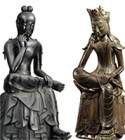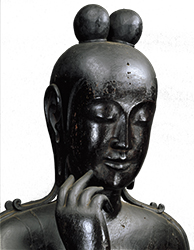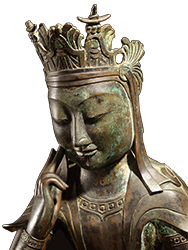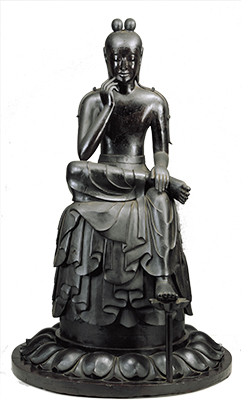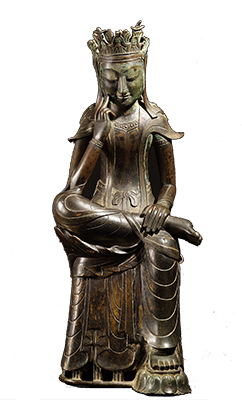Japanese Gallery (Honkan) Room T5
June 21, 2016 (Tue) - July 10, 2016 (Sun)
Buddhist deities portrayed with one leg crossed over the other and a hand held up to the cheek are called “pensive” Bodhisattvas, in reference to the state of deep contemplation that this pose represents. This type of image originated in India, the birthplace of Buddhism, and was later transmitted to China, and Korea, and Japan. Many sculptures of this type were created in Japan and Korea from the 6th to 8th centuries, including ones that are now considered masterpieces of ancient Buddhist sculpture.
Counted among these is a National Treasure preserved at Chuguji Temple in Nara prefecture. Its face, embellished with a gentle smile, is recognizable to nearly everyone in Japan. Another such masterpiece is in the collection of the National Museum of Korea. Made from bronze, it is well known to countless individuals in Korea as “National Treasure No. 78.” The fact that two exemplary sculptures with similar forms remain to this day in both Japan and Korea, speaks of the deep interactions between these two nations since ancient times.
This exhibition is a truly unique opportunity to savor the beauty of Buddhist sculpture from both Japan and Korea.
Preceding this exhibition, the two statues from Chuguji and the National Museum of Korea are featured in the special exhibition Pensive Bodhisattvas: National Treasures of Korea and Japan at the National Museum of Korea in Seoul, from Tuesday, May 24 to Sunday, June 12, 2016.

